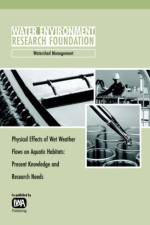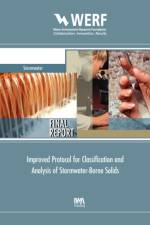- Present Knowledge and Research Needs
av Larry A. Roesner & Brian P. Bledsoe
2 029,-
This study explores the current state of knowledge with respect to the effects of wet weather flows from urban areas on the physical character of aquatic habitat. It identifies knowledge gaps with respect to our ability to define the cause-effect relationships, examines the comprehensiveness of the data used in support of the published literature in the subject area, and makes a qualitative determination of the usefulness of those data for further analysis to increase our knowledge in the subject area. Finally, it recommends further research studies that will increase our knowledge in the subject area, with emphasis on pilot-scale projects that can be used to develop practical protocols for preventing or mitigating the effects.Major findings and conclusions are: 1) we lack a solid conceptual framework for predicting the impact of large-scale watershed modifications and wet weather flows on ecological processes that influence stream communities; 2) there is a need for longer-term monitoring; 3) there is no widely accepted system for quantifying geomorphic instability and degradation of physical habitat; 4) there is a need for process-based stream classification; 5) specific links between urbanization characteristics and stream degradation are lacking; 6) there is a need for urban best management practice (BMP) assessment standards; and 7) developing a multi-scale understanding of habitat potential in human-dominated watersheds is needed. The report recommends a research program that first and foremost, includes comprehensive, long-term monitoring augmented with mathematical modeling of the linkages between development style/drainage system design, flow regime, and multi-scale changes in physical habitat and biotic response. Improved diagnosis and predictive understanding of future change require multifaceted, multiscale, and multidisciplinary studies based on a firm understanding of the history and processes operating in a drainage basin. Detailed long-term analyses of the influence of hydrologic regime and channel morphology on differences between communities in recruitment, immigration/emigration, mortality, and age structure are also needed. Finally, future research should directly examine tradeoffs between: 1) flood mitigation versus channel roughness, habitat heterogeneity, debris inputs, and riparian protection; 2) chemical water quality improvement through extended detention versus geomorphically-based flow regime controls; and, 3) rehabilitation of aquatic habitat using static features versus allowing the potential for dynamic adjustments in channel form and habitat structure. It is extremely important that the research be pragmatic, and focus on developing pilot/demonstration studies that will lead to design guidance that municipalities can use to design new systems, or improve existing systems, that will protect not only the safety and welfare of the citizenry that it serves, but also the aquatic ecosystems in the streams that receive the wet weather discharges from these urbanized sites.



